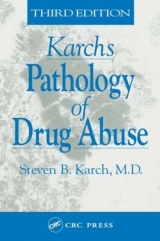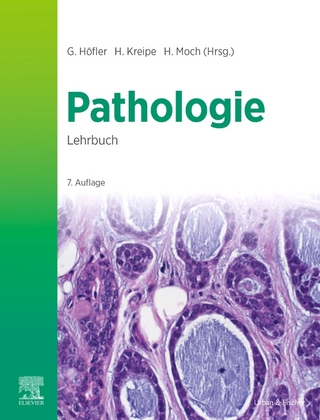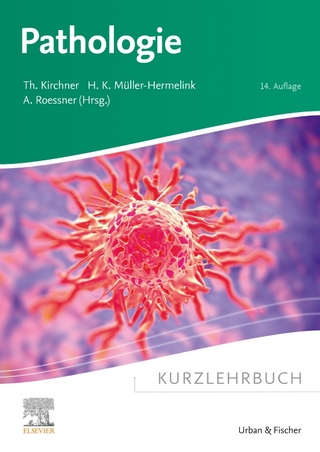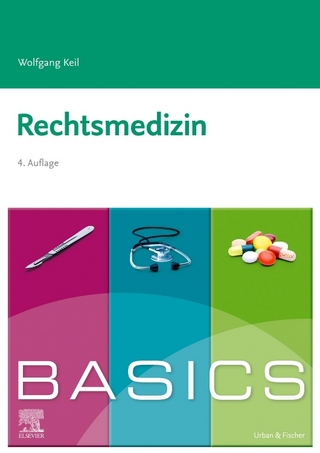
The Pathology of Drug Abuse, Second Edition
Crc Press Inc (Verlag)
978-0-8493-9464-5 (ISBN)
- Titel erscheint in neuer Auflage
- Artikel merken
The Pathology of Drug Abuse, Second Edition is a comprehensive yet accessible guide to the pathology, toxicology, and pharmacology of commonly abused drugs. The book also offers detailed information on the origin, history, and production techniques used to make these drugs. As in the first edition, emphasis remains focused on the investigation of drug-related deaths and on practical approaches to the detection of drug abuse. The medical complications associated with each of the abused drugs are discussed in some detail as well.
Individual chapters deal with cocaine, other naturally occurring stimulants, synthetic stimulants, hallucinogens, narcotics, anabolic steroids, and solvent abuse. Approximately 800 new references have been added since the publication of the first edition. Numerous new photomicrographs and drawings have been added, and many of the illustrations from the first edition have been redrawn to enhance clarity.
COCAINE
History
Prevalence of Cocaine-Related Morbidity
Cultivation and Manufacture
Cultivation and Crop Yields
Cocaine Paste Production
Drug Constants
Routes of Administration
Leaf Chewing
Snorting
Surgical Application
Intravenous Use
Genital Application
Dermal Absorption
Inhalation
Gastrointestinal Absorption
Maternal/Fetal Considerations
Metabolism
Cocaine Disposition
Fetal Metabolism
Interpreting Cocaine Blood Levels
Cocaine Tissue Disposition
Brain
Heart
Liver
Kidneys
Adrenals
Hair
Fat
Biofluids
Cocaine's Effects on Catecholamine Metabolism
General Considerations
Mechanisms of Catecholamine Toxicity
Histopathology of Catecholamine Toxicity
Contraction Band Necrosis and Sudden Death
Epidemiologic Data
External Markers of Cocaine Abuse
Perforated Nasal Septum
Cocaine "Tracks"
"Crack Keratitis"
Dental Erosions
"Crack Thumb"
"Crack Hands"
Evidence of Terminal Seizures
Toxicity by Organ System
Intugement
Cardiovascular System
Pulmonary Disease
Gastrointestinal Disorders
Neurologic Disorders
Renal Disease
Hematologic Abnormalities
Hormonal Alterations
Immune System Abnormalities
Pregnancy Interactions
When is Cocaine the Cause of Death?
OTHER NATURALLY OCCURRING STIMULANTS
Absinthe
History
Clinical and Autopsy Studies
Caffeine
History
Chemical Constants and Tissue Disposition
Clinical Studies
Blood Levels
Autopsy Findings
Khat
History
Chemistry and Clinical Studies
Ephedrine
History
Chemistry and Metabolism
Clinical Studies
SYNTHETIC STIMULANTS
Amphetamine and Methamphetamine
History
Illicit Manufacture
Chemistry
Routes of Administration
Metabolism
Tissue Disposition
Interpreting Amphetamine Levels
Toxicity by Organ System
Phenylpropanolamine
Historical Aspects
Chemistry
Metabolism
Toxicity by Organ System
Fenfluramine
Historical Aspects
Drug Constants
Metabolism
Blood and Tissue Levels
Toxicity by Organ System
HALLUCINOGENS
Phenylethylamine Derivatives
Mescaline
Other 2-Carbon Phenethylamine Derivatives
Substituted Amphetamines (Phenylisopropylamines)
TMA (2,4,5-Trimethoxyamphetamine)
DOM (Methyl-2,5-Dimethoxyamphetamine)
PMA (Paramethoxyamphetamine)
DOB (4-Bromo-2,5-Dimethoxyamphetamine, Also Called Bromo-DMA)
Nexus (4-Bromo-2,5-Dimethoxyphenethylamine)
MDA (3,4-Methylenedioxyamphetamine) "The Love Drug"
MDMA (3,4-Methylenedioxymethamphetamine); Other Names Include XTC, Adam, MDM
MDEA (3,4-Methylenedioxyethamphetamine)
MAX (4-Methylaminorex)
Other MDMA Homologs
"KAT"
Phenylalkylamines
Simple Tryptamines
Beta Carbolines
Alpha-Methyltryptamines
Ergolines
Other Agents
Phencyclidine
Dextromethorphan
NARCOTICS
Introduction
Prevalence of Opiate-Related Morbidity
Classifications of Narcotic Agents
History of Opiate Abuse
Origins in Antiquity
Introduction to Europe and Asia
Invention of the Hypodermic Syringe
Synthesis of Heroin
The First Pathology Studies
Cultivation and Manufacture
Botanic Considerations
Manufacture
Sample Analysis
Individual Narcotic Agents
Morphine
Heroin
Codeine
Methadone
Propoxyphene
Fentanyl and Other Synthetic Agents
Other Opiates
Interpreting Tissue and Blood Levels
Introduction
Testing Urine
Testing Blood
Interpreting Test Results
Clinical Profile of Opiate Abusers
Dermatologic Sequelae of Opiate Abuse
Fresh Puncture Sites
Atrophic Scarring
Abscess and Ulcerations
"Track" Marks
Tattoos
"Puffy" Hands
Necrotizing Fascitis
Histamine-Related Urticaria
Fungal Lesions
Miscellaneous Cutaneous Abnormalities
Cardiovascular Disorders
Introduction
Pathology Associated with HIV Infection
Endocarditis
Other Myocardial Disorders
Miscellaneous Disorders
Pulmonary Disorders
Noninfectious Complications
Infectious Complications
Gastrointestinal Disorders
Introduction
Bowel Disease
Liver Disorders
Renal Disorders
Introduction
Acute Renal Failure Due to Nontraumatic Rhabdomyolysis
Secondary Amyloidosis
Heroin Associated Nephropathy (HAN) and Other Glomerular Disorders
Necrotizing Angiitis
Neuropathology
Introduction
Hypoxic Encephalopathy
Infectious Diseases
Hormonal and Immune Alterations
Bone and Soft Tissue Disorders
Introduction
Bone and Joint Infection
Soft Tissue Infections
Fibrous Myopathy of Pentazocine Abuse
ANABOLIC STEROIDS
Introduction
Pharmacology
Synthesis and Metabolism
Black Market Steroids and Steroid Contaminants
Legitimate Clinical Indications
Steroid-Related Disorders
Liver Disease
Cardiovascular Disease
Neurologic Disorders
Musculoskeletal Disease
Detecting Steroid Abuse
ORGANIC SOLVENT AND AEROSOL ABUSE
General Considerations
Absorption and Tissue Disposition
Clinical Syndromes
Neurologic Disorders
Renal Disease
Gastrointestinal Disease
Cardiovascular Disease
Appendix
Index
| Erscheint lt. Verlag | 19.6.1996 |
|---|---|
| Zusatzinfo | 20 Halftones, black and white; 24 Tables, black and white |
| Verlagsort | Bosa Roca |
| Sprache | englisch |
| Maße | 156 x 235 mm |
| Gewicht | 984 g |
| Einbandart | gebunden |
| Themenwelt | Medizin / Pharmazie ► Medizinische Fachgebiete ► Pharmakologie / Pharmakotherapie |
| Studium ► 2. Studienabschnitt (Klinik) ► Pathologie | |
| ISBN-10 | 0-8493-9464-3 / 0849394643 |
| ISBN-13 | 978-0-8493-9464-5 / 9780849394645 |
| Zustand | Neuware |
| Informationen gemäß Produktsicherheitsverordnung (GPSR) | |
| Haben Sie eine Frage zum Produkt? |
aus dem Bereich



